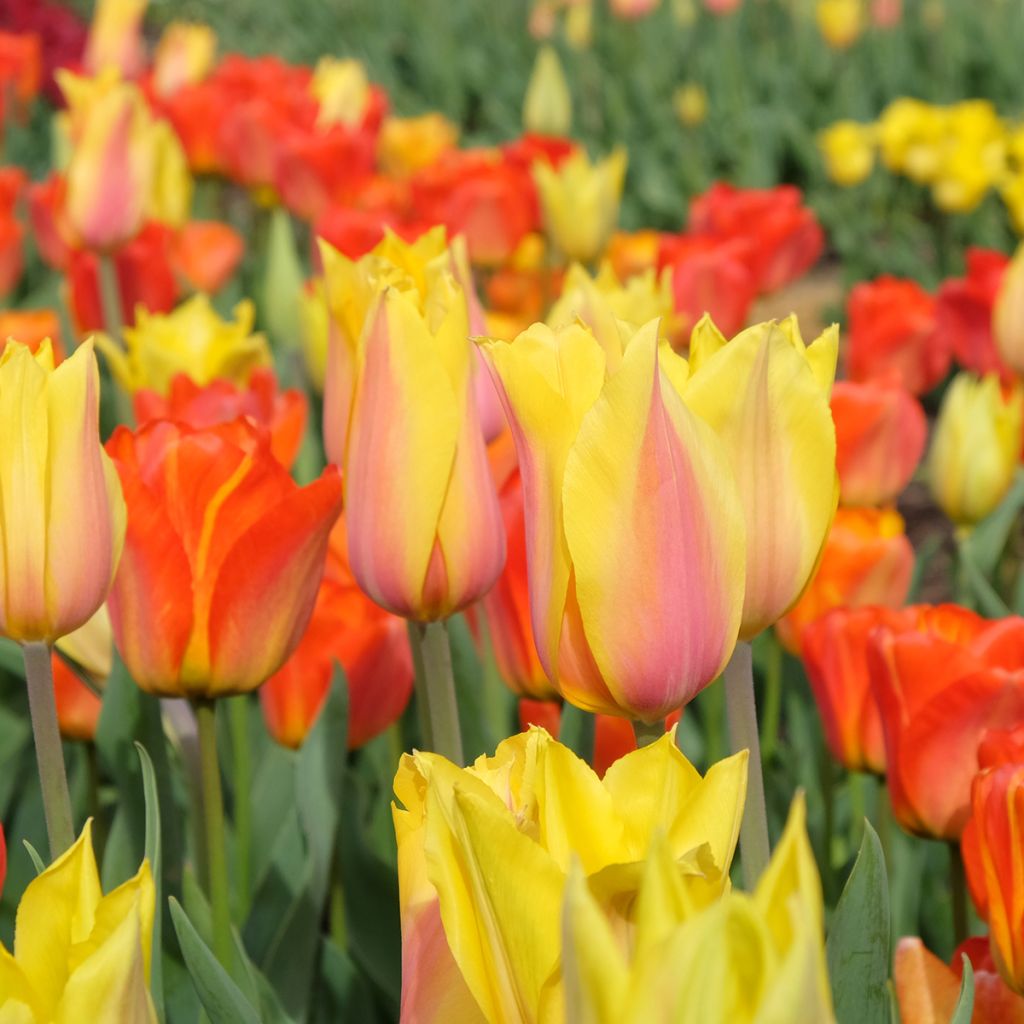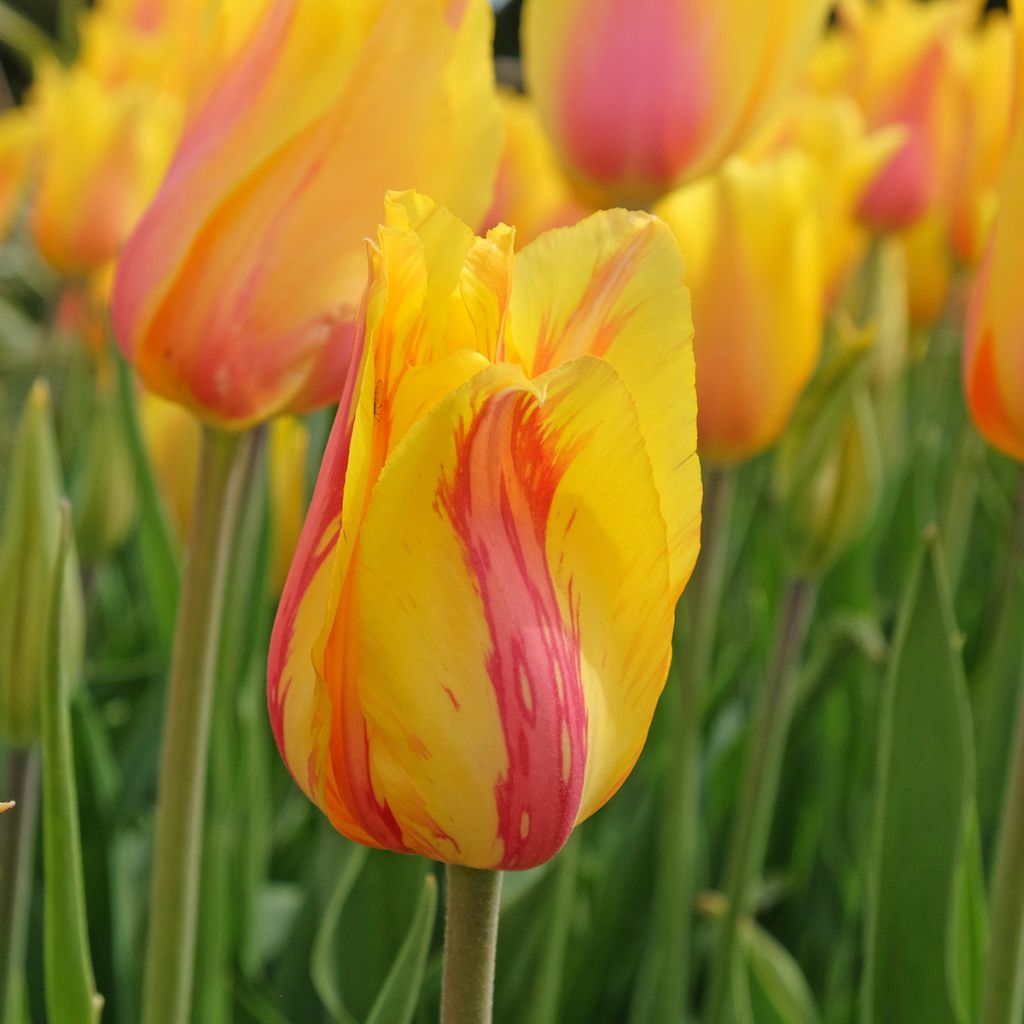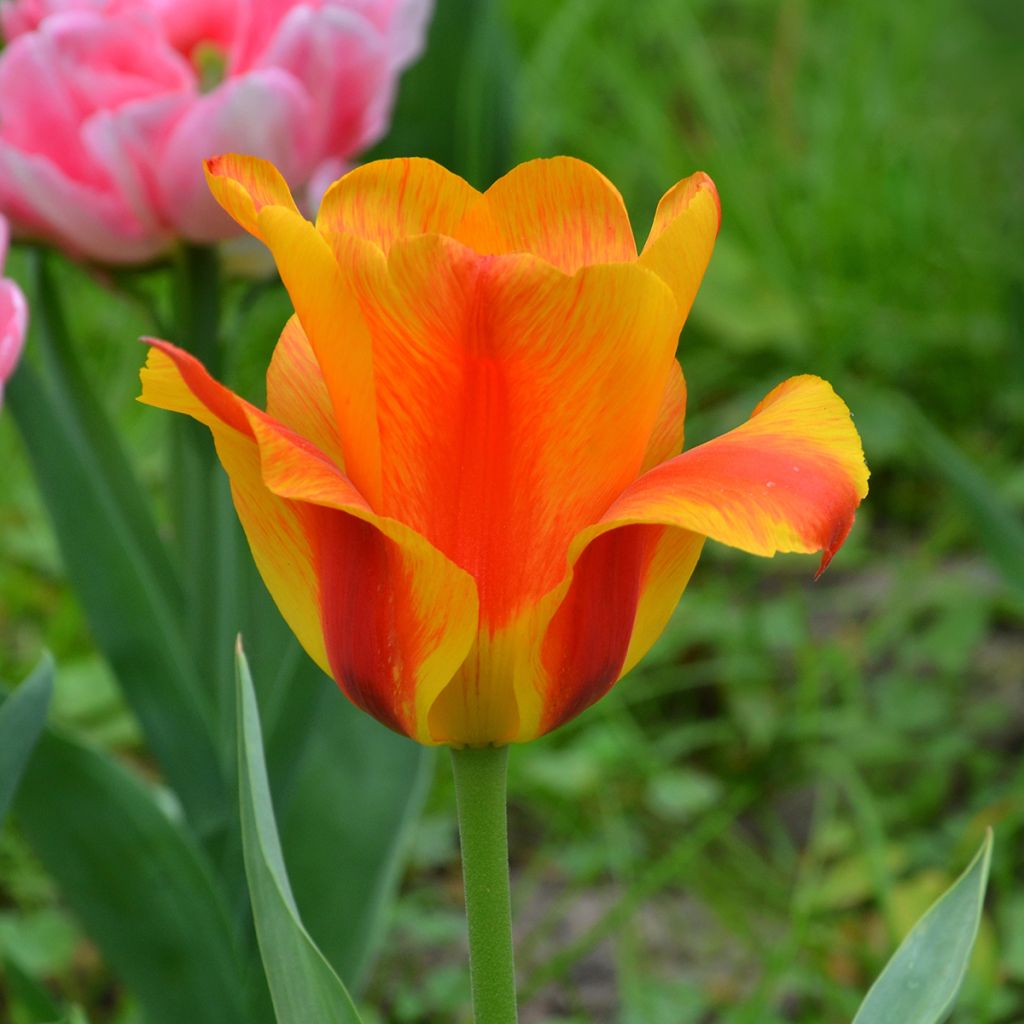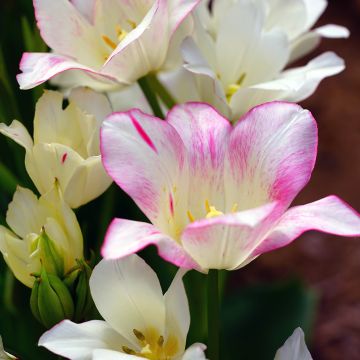

Tulipa El Niño - Early simple Tulip


Tulipa El Niño - Early simple Tulip


Tulipa El Niño - Early simple Tulip


Tulipa El Niño - Early simple Tulip
Tulipa El Niño - Early simple Tulip
Tulipa El Niño
Tulip
Special offer!
Receive a €20 voucher for any order over €90 (excluding delivery costs, credit notes, and plastic-free options)!
1- Add your favorite plants to your cart.
2- Once you have reached €90, confirm your order (you can even choose the delivery date!).
3- As soon as your order is shipped, you will receive an email containing your voucher code, valid for 3 months (90 days).
Your voucher is unique and can only be used once, for any order with a minimum value of €20, excluding delivery costs.
Can be combined with other current offers, non-divisible and non-refundable.
Why not try an alternative variety in stock?
View all →This plant carries a 6 months recovery warranty
More information
We guarantee the quality of our plants for a full growing cycle, and will replace at our expense any plant that fails to recover under normal climatic and planting conditions.
Would this plant suit my garden?
Set up your Plantfit profile →
Description
The 'El Niño' Late Single Tulip is remarkable for its flamboyant and unpredictable colouring, displaying various patterns in a palette of red, orange, salmon, and yellow tones. Each flower evolves at its own pace, redistributing the play of colours in its own way. A single group of 'El Nino' tulips sets the borders on fire in May. The flowers also have good vase life.
The 'El Niño' Tulip belongs to the Liliaceae family. Originally horticultural, it is currently classified in Division 5 of late single tulips, which are known for flowering late in the season. They possess the same qualities as 'Darwin hybrid' tulips but bloom just after. This 'El Niño' variety will reach a height of 50-55 cm (20-22in) when in flower. Perched on weather-resistant stems, well above the broadly lanceolate leaves, the flowers are large. They are composed of petals that are not perfectly oval, but slightly tapered at the tip. Flowering takes place in May, or even at the beginning of June depending on the climate, making this variety useful in the garden to accompany the first summer blooms. The glaucous foliage turns yellow and disappears some time after flowering. The bulb goes into dormancy.
Plant this 'El Niño' tulip in mass plantings, as this is when it will truly shine. It can emerge from a carpet of Snow-in-Summer (Cerastium) or Iberis sempervirens Snowflake which will hide its absence in summer. The forget-me-nots and daisies, with their pastel-toned flowers, will complement it well. Tulips have their rightful place among perennials such as heucheras, catmints, perennial geraniums, and other agastaches. With their rich colours, sturdy and resistant flowers, they can be used both in mass plantings and to enhance your bouquets. Late single tulips are highly regarded by gardeners. They are unmatched for bringing the colours of spring to pots or sunny flower beds. When designing your plantings, do not forget to consider the height and flowering period, as these parameters can vary significantly from one cultivar to another. It is wise to plant a few extra bulbs for cutting, as they make stunning cut flowers that last a long time in a vase.
Report an error about the product description
Tulipa El Niño - Early simple Tulip in pictures


Plant habit
Flowering
Foliage
Botanical data
Tulipa
El Niño
Liliaceae
Tulip
Cultivar or hybrid
Other Single Tulips
View all →Planting and care
Plant the bulbs in autumn, from September to December, at a depth of 15 cm (6in), spacing them 10 cm (4in) apart. The planting should be done in ordinary soil, slightly acidic, neutral, or slightly alkaline, loose, well-worked, and well-drained. Never add undecomposed manure or compost to the planting soil, as it could cause the bulbs to rot. The 'El Nino' tulip will thrive in moderately dry soil. Plant it in a sunny or partially shaded position. After flowering, it is advisable to remove the fruits to prevent the plant from becoming depleted.
Planting period
Intended location
Care
This item has not been reviewed yet - be the first to leave a review about it.
Haven't found what you were looking for?
Hardiness is the lowest winter temperature a plant can endure without suffering serious damage or even dying. However, hardiness is affected by location (a sheltered area, such as a patio), protection (winter cover) and soil type (hardiness is improved by well-drained soil).

Photo Sharing Terms & Conditions
In order to encourage gardeners to interact and share their experiences, Promesse de fleurs offers various media enabling content to be uploaded onto its Site - in particular via the ‘Photo sharing’ module.
The User agrees to refrain from:
- Posting any content that is illegal, prejudicial, insulting, racist, inciteful to hatred, revisionist, contrary to public decency, that infringes on privacy or on the privacy rights of third parties, in particular the publicity rights of persons and goods, intellectual property rights, or the right to privacy.
- Submitting content on behalf of a third party;
- Impersonate the identity of a third party and/or publish any personal information about a third party;
In general, the User undertakes to refrain from any unethical behaviour.
All Content (in particular text, comments, files, images, photos, videos, creative works, etc.), which may be subject to property or intellectual property rights, image or other private rights, shall remain the property of the User, subject to the limited rights granted by the terms of the licence granted by Promesse de fleurs as stated below. Users are at liberty to publish or not to publish such Content on the Site, notably via the ‘Photo Sharing’ facility, and accept that this Content shall be made public and freely accessible, notably on the Internet.
Users further acknowledge, undertake to have ,and guarantee that they hold all necessary rights and permissions to publish such material on the Site, in particular with regard to the legislation in force pertaining to any privacy, property, intellectual property, image, or contractual rights, or rights of any other nature. By publishing such Content on the Site, Users acknowledge accepting full liability as publishers of the Content within the meaning of the law, and grant Promesse de fleurs, free of charge, an inclusive, worldwide licence for the said Content for the entire duration of its publication, including all reproduction, representation, up/downloading, displaying, performing, transmission, and storage rights.
Users also grant permission for their name to be linked to the Content and accept that this link may not always be made available.
By engaging in posting material, Users consent to their Content becoming automatically accessible on the Internet, in particular on other sites and/or blogs and/or web pages of the Promesse de fleurs site, including in particular social pages and the Promesse de fleurs catalogue.
Users may secure the removal of entrusted content free of charge by issuing a simple request via our contact form.
The flowering period indicated on our website applies to countries and regions located in USDA zone 8 (France, the United Kingdom, Ireland, the Netherlands, etc.)
It will vary according to where you live:
- In zones 9 to 10 (Italy, Spain, Greece, etc.), flowering will occur about 2 to 4 weeks earlier.
- In zones 6 to 7 (Germany, Poland, Slovenia, and lower mountainous regions), flowering will be delayed by 2 to 3 weeks.
- In zone 5 (Central Europe, Scandinavia), blooming will be delayed by 3 to 5 weeks.
In temperate climates, pruning of spring-flowering shrubs (forsythia, spireas, etc.) should be done just after flowering.
Pruning of summer-flowering shrubs (Indian Lilac, Perovskia, etc.) can be done in winter or spring.
In cold regions as well as with frost-sensitive plants, avoid pruning too early when severe frosts may still occur.
The planting period indicated on our website applies to countries and regions located in USDA zone 8 (France, United Kingdom, Ireland, Netherlands).
It will vary according to where you live:
- In Mediterranean zones (Marseille, Madrid, Milan, etc.), autumn and winter are the best planting periods.
- In continental zones (Strasbourg, Munich, Vienna, etc.), delay planting by 2 to 3 weeks in spring and bring it forward by 2 to 4 weeks in autumn.
- In mountainous regions (the Alps, Pyrenees, Carpathians, etc.), it is best to plant in late spring (May-June) or late summer (August-September).
The harvesting period indicated on our website applies to countries and regions in USDA zone 8 (France, England, Ireland, the Netherlands).
In colder areas (Scandinavia, Poland, Austria...) fruit and vegetable harvests are likely to be delayed by 3-4 weeks.
In warmer areas (Italy, Spain, Greece, etc.), harvesting will probably take place earlier, depending on weather conditions.
The sowing periods indicated on our website apply to countries and regions within USDA Zone 8 (France, UK, Ireland, Netherlands).
In colder areas (Scandinavia, Poland, Austria...), delay any outdoor sowing by 3-4 weeks, or sow under glass.
In warmer climes (Italy, Spain, Greece, etc.), bring outdoor sowing forward by a few weeks.


































